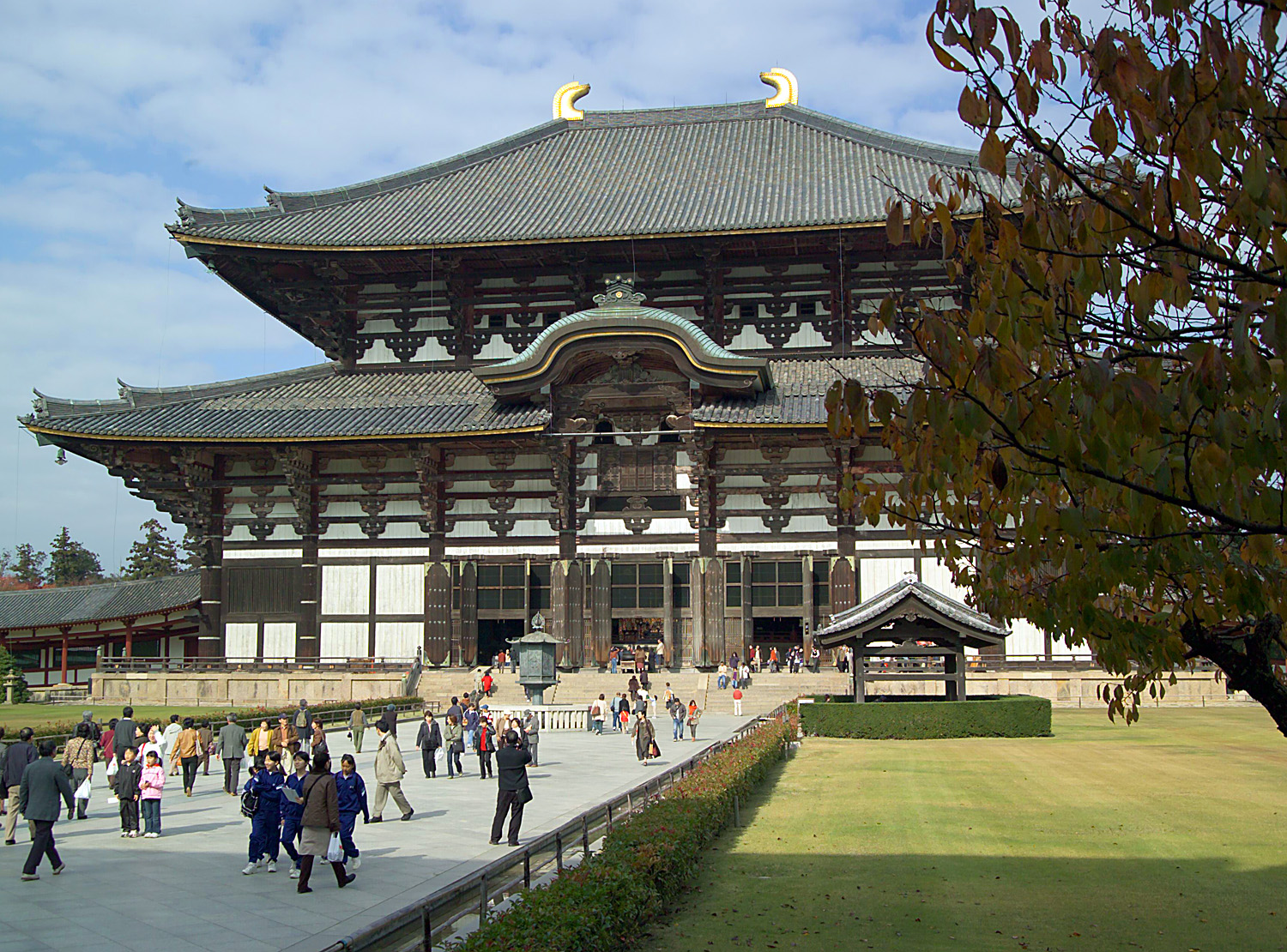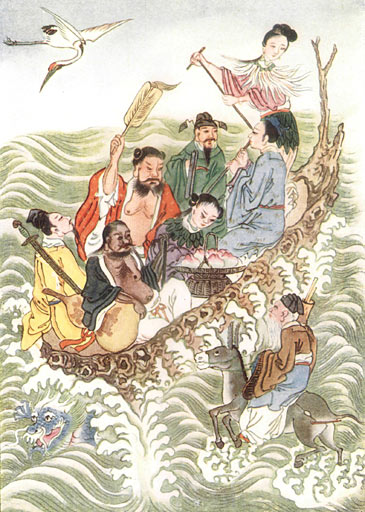|
Karamon
The is a type of gate seen in Japanese architecture. It is characterized by the usage of ''karahafu'', an undulating bargeboard peculiar to Japan. ''Karamon'' are often used at the entrances of Japanese castles, Buddhist temples and Shinto shrines, and have historically been a symbol of authority. History Although ''kara'' (唐) can be translated as meaning "China" or "Tang", this type of roof with undulating bargeboards first appeared in Japan during the late Heian period.karahafu 唐破風 " JAANUS. Retrieved on June 12, 2009. It was named thus because the word ''kara'' was associated by the Japanese with any type of ornate architecture regardless of origin. " JAANUS. Retrieved on June 12, 2 ... [...More Info...] [...Related Items...] OR: [Wikipedia] [Google] [Baidu] |
Mon (architecture)
is a generic Japanese term for gate often used, either alone or as a suffix, in referring to the many gates used by Buddhist temples, Shinto shrines and traditional-style buildings and castles. Significance Unlike gates of secular buildings, most temple and shrine gates are purely symbolic elements of liminality, as they cannot be completely closed and just mark the transition between the mundane and the sacred. In many cases, for example that of the ''sanmon'', a temple gate has purifying, cleansing properties. Description Gate size is measured in ''ken'', where a ''ken'' is the interval between two pillars of a traditional-style building. A temple's ''rōmon'' for example can have dimensions from a maximum of 5x2 ''ken'' to a more common 3x2 ''ken'', down to even one ''ken''. The word is usually translated in English as "bay" and is better understood as an indication of proportions than as a unit of measurement. Like the temples they belong to, gates can be in the ''wayō ... [...More Info...] [...Related Items...] OR: [Wikipedia] [Google] [Baidu] |
Karahafu
is a type of curved gable found in Japanese architecture. It is used on Japanese castles, Buddhist temples, and Shinto shrines. Roofing materials such as tile and bark may be used as coverings. The face beneath the gable may be flush with the wall below, or it may terminate on a lower roof. History Although ''kara'' (唐) can be translated as meaning "China" or "Tang", this type of roof with undulating bargeboards is an invention of Japanese carpenters in the late Heian period.karahafu 唐破風 " JAANUS. Retrieved on May 30, 2009. It was named thus because the word ''kara'' could also mean "noble" or "elegant", and was often added to names of objects considered grand or intricate regardless of origin.< ... [...More Info...] [...Related Items...] OR: [Wikipedia] [Google] [Baidu] |
Nikkō Tōshō-gū
is a Tōshō-gū Shinto shrine located in Nikkō, Tochigi Prefecture, Japan. Together with Futarasan Shrine and Rinnō-ji, it forms the Shrines and Temples of Nikkō UNESCO World Heritage Site, with 42 structures of the shrine included in the nomination. Five of them are designated as National Treasures of Japan, and three more as Important Cultural Properties. History Tōshō-gū is dedicated to Tokugawa Ieyasu, the founder of the Tokugawa shogunate. It was initially built in 1617, during the Edo period, while Ieyasu's son Hidetada was ''shōgun''. It was enlarged during the time of the third shōgun, Iemitsu. Ieyasu is enshrined there, where his remains are also entombed. This shrine was built by Tokugawa retainer Tōdō Takatora. During the Edo period, the Tokugawa shogunate carried out stately processions from Edo to the Nikkō Tōshō-gū along the Nikkō Kaidō. The shrine's annual spring and autumn festivals reenact these occasions, and are known as "processions of ... [...More Info...] [...Related Items...] OR: [Wikipedia] [Google] [Baidu] |
Japanese Buddhist Architecture
Examples of Buddhist architecture in Japan Japanese Buddhist architecture is the architecture of Buddhist temples in Japan, consisting of locally developed variants of architectural styles born in China.p=716/ref> After Buddhism arrived from the continent via the Three Kingdoms of Korea in the 6th century, an effort was initially made to reproduce the original buildings as faithfully as possible, but gradually local versions of continental styles were developed both to meet Japanese tastes and to solve problems posed by local weather, which is more rainy and humid than in China. The first Buddhist sects were Nara's six ,The six sects were called Sanron-, Jōjitsu-, Hossō-, Kusha-, Ritsu-, and Kegon-shū. followed during the Heian period by Kyoto's Shingon and Tendai. Later, during the Kamakura period, in Kamakura were born the Jōdo and the native Japanese sect Nichiren-shū. At roughly the same time, Zen Buddhism arrived from China, strongly influencing all other sects in m ... [...More Info...] [...Related Items...] OR: [Wikipedia] [Google] [Baidu] |
Bargeboard
Bargeboard (probably from Medieval Latin ''bargus'', or ''barcus'', a scaffold, and not from the now obsolete synonym "vergeboard") or rake fascia is a board fastened to each projecting gable of a roof to give it strength and protection, and to conceal the otherwise exposed end grain of the horizontal timbers or purlins of the roof. History Historically, bargeboards are sometimes moulded only or carved, but as a rule the lower edges were cusped and had tracery in the spandrels besides being otherwise elaborated. An example in Britain was one at Ockwells in Berkshire (built 1446–1465), which was moulded and carved as if it were intended for internal work. Modern residential rake fascias are typically made of 2-by dimensional lumber, with trim added for decoration and/or weatherproofing later. See also * Antefix * Cornice * Eaves * Fascia * Karamon – use in Japanese architecture * Soffit A soffit is an exterior or interior architectural feature, generally the horiz ... [...More Info...] [...Related Items...] OR: [Wikipedia] [Google] [Baidu] |
:Category:Japanese Words And Phrases ...
{{Commons Words and phrases by language Words Words Words A word is a basic element of language that carries an objective or practical meaning, can be used on its own, and is uninterruptible. Despite the fact that language speakers often have an intuitive grasp of what a word is, there is no consen ... [...More Info...] [...Related Items...] OR: [Wikipedia] [Google] [Baidu] |
Shōgun
, officially , was the title of the military dictators of Japan during most of the period spanning from 1185 to 1868. Nominally appointed by the Emperor, shoguns were usually the de facto rulers of the country, though during part of the Kamakura period, shoguns were themselves figureheads, with real power in hands of the Shikken of the Hōjō clan. The office of shogun was in practice hereditary, though over the course of the history of Japan several different clans held the position. The title was originally held by military commanders during Heian period in the eighth and ninth centuries. When Minamoto no Yoritomo gained political ascendency over Japan in 1185, the title was revived to regularize his position, making him the first shogun in the usually understood sense. The shogun's officials were collectively referred to as the ; they were the ones who carried out the actual duties of administration, while the Imperial court retained only nominal authority.Beasley, William G ... [...More Info...] [...Related Items...] OR: [Wikipedia] [Google] [Baidu] |
List Of National Treasures Of Japan (temples)
A ''list'' is any set of items in a row. List or lists may also refer to: People * List (surname) Organizations * List College, an undergraduate division of the Jewish Theological Seminary of America * SC Germania List, German rugby union club Other uses * Angle of list, the leaning to either port or starboard of a ship * List (information), an ordered collection of pieces of information ** List (abstract data type), a method to organize data in computer science * List on Sylt, previously called List, the northernmost village in Germany, on the island of Sylt * ''List'', an alternative term for ''roll'' in flight dynamics * To ''list'' a building, etc., in the UK it means to designate it a listed building that may not be altered without permission * Lists (jousting), the barriers used to designate the tournament area where medieval knights jousted * ''The Book of Lists'', an American series of books with unusual lists See also * The List (other) * Listing (di ... [...More Info...] [...Related Items...] OR: [Wikipedia] [Google] [Baidu] |
Eight Immortals
The Eight Immortals () are a group of legendary ''xian'' ("immortals") in Chinese mythology. Each immortal's power can be transferred to a vessel () that can bestow life or destroy evil. Together, these eight vessels are called the "Covert Eight Immortals" (). Most of them are said to have been born in the Tang or Song Dynasty. They are revered by the Taoists and are also a popular element in secular Chinese culture. They are said to live on a group of five islands in the Bohai Sea, which includes Mount Penglai. The Immortals are: * He Xiangu (), in modern context generally seen as the only female of the group, often depicted holding a lotus flower. * Cao Guojiu (), related to a Song dynasty emperor before he became an immortal. * Li Tieguai (), considered to be mentally disturbed and associated with medicine and easing the suffering of the sick and needy, identified by his iron crutch and Calabash bottle. * Lan Caihe (), originally pictured as female later developed an ambiguous ... [...More Info...] [...Related Items...] OR: [Wikipedia] [Google] [Baidu] |
Seven Lucky Gods
In Japanese mythology, the Seven Lucky Gods or Seven Gods of Fortune (, shichifukujin in Japanese) are believed to grant good luck and are often represented in netsuke and in artworks. One of the seven (Jurōjin) is said to be based on a historical figure. They all began as remote and impersonal gods, but gradually became much closer canonical figures for certain professions and Japanese arts. During the course of their history, the mutual influence between gods has created confusion about which of them was the patron of certain professions. The worship of this group of gods is also due to the importance of the number seven in Japan, supposedly a signifier of good luck. Origin and history It is known that these deities mostly have their origins as ancient gods of fortune from religions popular in Japan: from Mahayana Buddhism (Benzaiten, Bishamonten, Daikokuten) which came to Japan from China but originated in India, and from Chinese Taoism (Fukurokuju, Hotei, Jurojin); except f ... [...More Info...] [...Related Items...] OR: [Wikipedia] [Google] [Baidu] |







